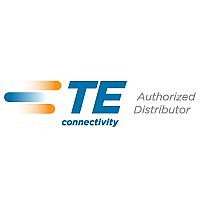68081 Tyco Electronics, 68081 Datasheet - Page 5

68081
Manufacturer Part Number
68081
Description
PNEU HEAD COPALUM 8-1/0AWG
Manufacturer
Tyco Electronics
Datasheet
1.68081.pdf
(8 pages)
Specifications of 68081
Lead Free Status / RoHS Status
Not applicable / Not applicable
3. CRIMP INSPECTION
Inspect crimped terminals and splices by checking the
features described in Figure 5.
Use only terminals and splices meeting the conditions
shown in the “ACCEPT” column. “REJECT” terminals
and splices can be avoided through careful use of
instructions in Section 2, and by performing regular
crimping head maintenance as provided in Section 4.
4. MAINTENANCE/INSPECTION PROCEDURE
Tyco Electronics recommends that a
maintenance/inspection program be performed
periodically to ensure dependable and uniform
terminations. Crimping heads should be inspected at
least once a month. Frequency of inspection may be
adjusted to suit your requirements through
experience. Frequency of inspection is dependent
upon:
All crimping heads are thoroughly inspected before
packaging. Since there is a possibility of damage in
shipment, new heads should be inspected in
accordance with the following instructions when
received in your plant.
4.1. Cleaning
The crimping head should be immersed in a reliable
commercial de–greasing compound to remove
accumulated dirt, grease and foreign matter. Remove
remaining de–greasing compound with a lint–free
cloth. When de–greasing compounds are not
available, head may be wiped clean with a lint–free
Rev A
Insulation Piercing COPALUM Terminal and Splice Crimping Heads
CAUTION
3. Release thumb control and remove crimped
splice.
4. Refer to Section 3 and Figure 5 for crimp
inspection.
NOTE
S The care, amount of use, and handling of the
S The type and size of the products crimped.
S The degree of operator skill.
S The presence of abnormal amounts of dust and
S Your own established standards.
i
!
head.
dirt.
If COPALUM Terminal or Splice sticks in die after
crimping, apply a rocking action to remove from
die.
Do not allow deposits of dirt, grease and foreign
matter to accumulate on the die closure surfaces.
These deposits may cause excessive wear,
thereby affecting the quality of the crimp.
Tyco Electronics Corporation
cloth. Re–lubricate head as instructed in Paragraph
4.3 before placing it back in service.
4.2. Visual Inspection
4.3. Lubrication
Lubricate all pins, pivot points, and bearing surfaces
with a good grade S.A.E. No. 20 motor oil as follows:
Wipe excess oil from head, particularly from crimping
area. Oil transferred from the crimping area onto
certain terminations may affect the electrical
characteristics of an application.
1. Visually inspect the crimping head for missing
pins or retaining rings. If parts are missing or
defective, refer to Figure 10 for customer
replaceable parts.
2. Inspect the die closure surfaces of the head for
broken, pitted, or chipped conditions. Although dies
may gage within permissible limits, worn or
damaged die closure surfaces are objectionable
and can affect the quality of the crimp. Examples
of possible damaged die closure surfaces are
shown in Figure 6.
Heads used in daily production – Lubricate daily
Heads used daily (occasional) – Lubricate weekly
Heads used weekly – Lubricate monthly
Figure 6
Broken
Chipped
408-2433
Pitted
5 of 8







